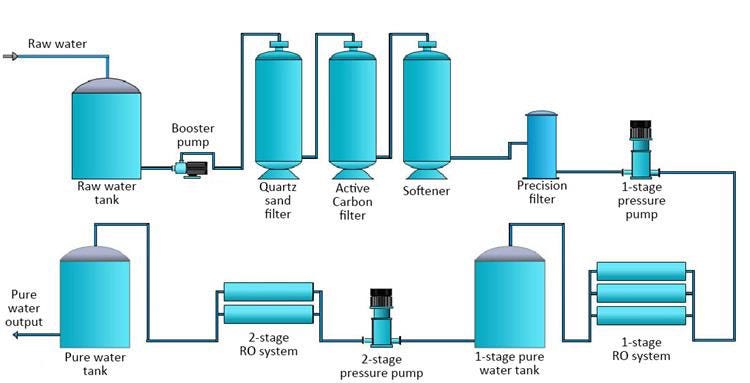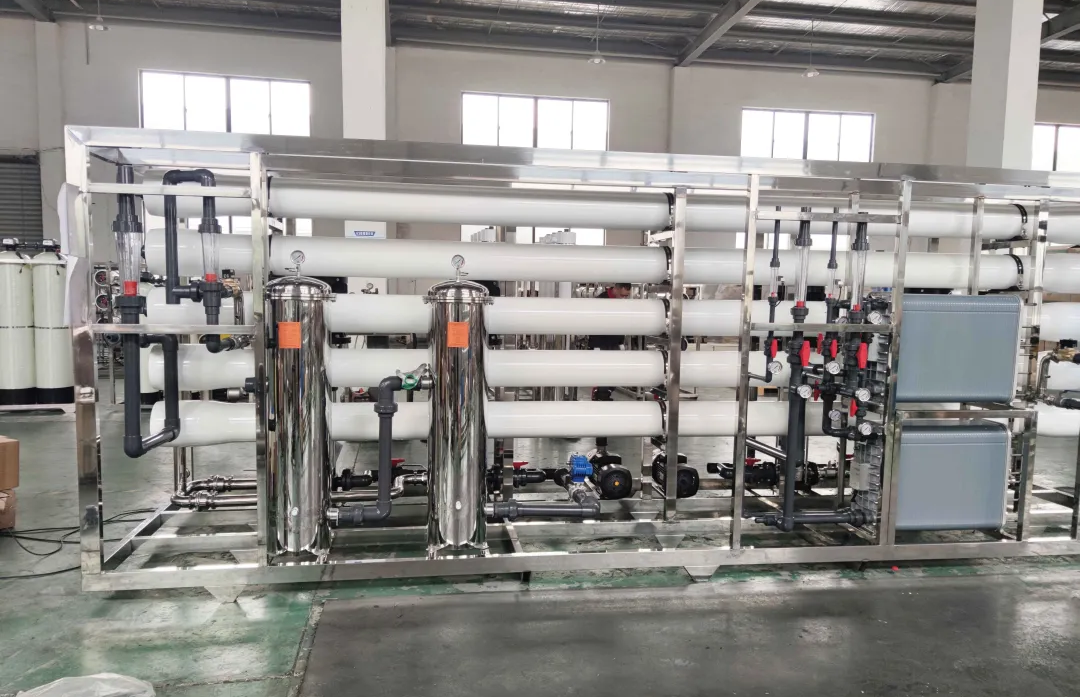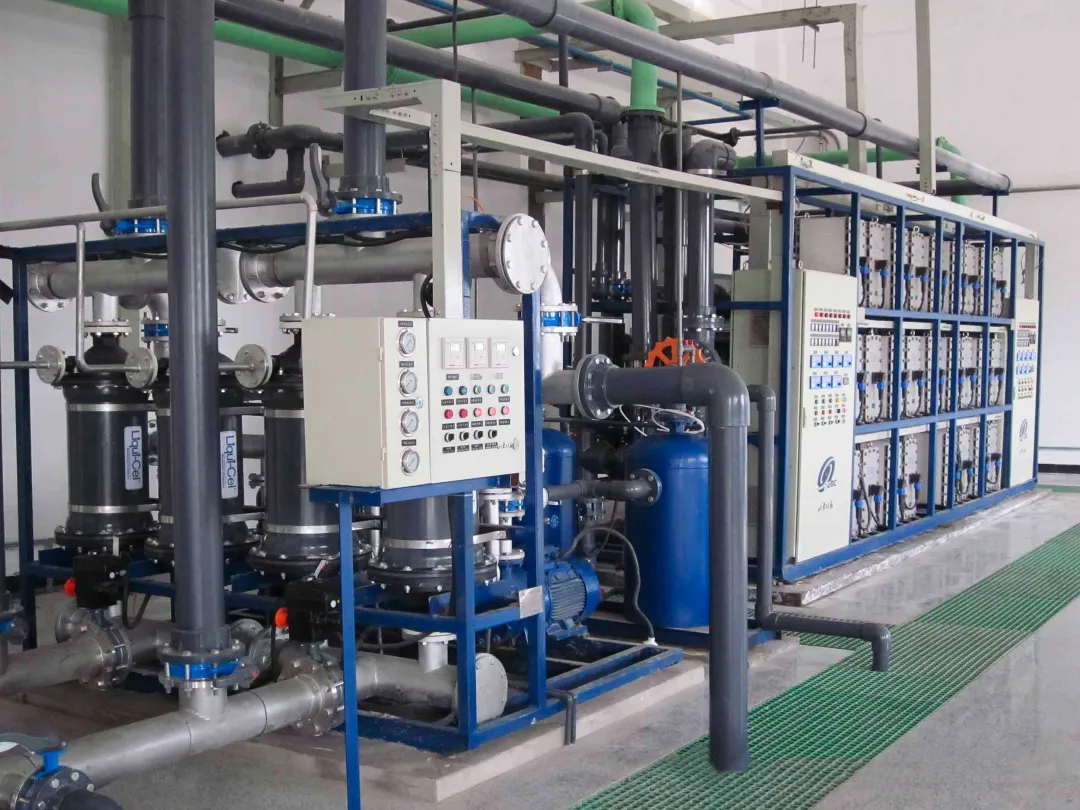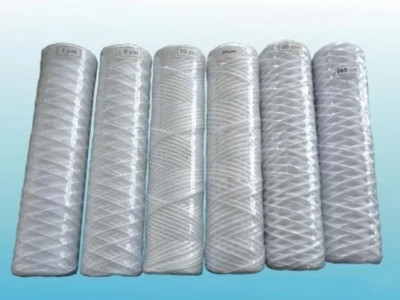In recent years, the demand for high-quality water has significantly increased. To meet this demand, reverse osmosis (RO) pure water systems have been developed and widely accepted. Ensuring the performance and stability of RO membranes is crucial, which requires diligent maintenance. The following guide provides detailed maintenance strategies to help ensure consistent and high-quality water output from your RO system.
July 23, 2024

Avoid Frequent Start and Stop Cycles
One critical aspect of maintaining your RO pure water system is to avoid frequent start and stop cycles. Continuous operation is essential for several reasons:
–Consistent Water Quality: Frequent power and water source interruptions can lead to fluctuations in water quality. RO pure water systems are designed to operate continuously to ensure a stable purification process.
– System Wear and Tear: Each start and stop cycle puts additional strain on the system’s components, including pumps, valves, and membranes, potentially leading to premature failure.
– Efficiency and Lifespan: Continuous operation reduces the mechanical and hydraulic stresses on the system, thereby extending the overall lifespan of the equipment.
– Pre-Operation Checks: Before starting the system, ensure all connections are secure and there are no leaks in the piping. Verify that the water source is stable and available.
– Controlled Shutdown: When shutting down the system, always disconnect the power supply first, followed by the water source. This prevents any pressure build-up in the system that might damage the components.
– Use Automation Wisely: Utilize the system’s automatic controls efficiently. Avoid manual interventions that might interrupt the system’s operations unnecessarily.
Regular Filter Cartridge Maintenance
Filter cartridges play a crucial role in the performance of RO pure water systems. They help in removing larger particulates and contaminants before the water reaches the RO membrane. Regular inspection and maintenance of these filters are essential to maintain optimal water quality.
– Scheduled Inspections: Conduct regular inspections of the filter cartridges based on the manufacturer’s recommendations. Look for signs of clogging, discoloration, or damage.
– Timely Replacements: Replace filter cartridges according to the specified intervals or sooner if water quality begins to decline. Using a pressure gauge can help monitor filter performance; an increase in pressure drop across the filter indicates it’s time for a replacement.
– Document Changes: Keep a maintenance log of filter changes, noting the date and condition of the replaced filter. This helps in tracking the frequency of replacements and identifying any patterns or issues.
Ensure a Dedicated Water Supply System
An independent water supply system is crucial for the optimal functioning of an RO pure water system. This setup minimizes the impact of fluctuations in the main water supply and reduces the load on the RO membranes.
– Stable Water Source: Ensure that the water source for the RO pure water system is stable and free from significant variations in pressure and quality.
– Pressure Regulation: Install high and low-pressure protection devices to safeguard the system against pressure surges or drops that could damage the RO membranes.
– Isolation from Main Supply: Where possible, isolate the RO water supply from the main water distribution network to avoid pressure fluctuations affecting the RO pure water system.

Routine Maintenance and Cleaning
Regular maintenance and cleaning are vital for the longevity and performance of RO pure water systems. Over time, contaminants and minerals can accumulate on the RO membranes, reducing their efficiency and leading to poor water quality.
– Scheduled Cleanings: Follow a strict cleaning schedule for the RO membranes. The frequency of cleaning will depend on the water source and usage but typically ranges from every few months to annually.
– Use Appropriate Cleaning Solutions: Use cleaning solutions that are specifically designed for RO membranes. These solutions help dissolve and remove fouling substances without damaging the membrane material.
– Backwashing and Flushing: Regularly backwash and flush the system to remove any accumulated particles and prevent clogging. This is particularly important if the system operates continuously or in environments with high levels of particulates.
– Visual Inspections: Periodically disassemble and visually inspect the membranes and other components for signs of wear, scaling, or biofouling. Early detection of issues can prevent major problems and costly repairs.
Monitoring System Performance
Constant monitoring of system performance is essential to ensure the RO pure water system is functioning optimally. Key parameters to monitor include water quality, pressure, flow rates, and system efficiency.
– Install Sensors and Gauges: Equip the system with sensors and gauges to continuously monitor critical parameters. These devices can provide real-time data and alerts if any parameter deviates from the norm.
– Regular Testing: Conduct regular water quality tests to measure parameters such as Total Dissolved Solids (TDS), pH, and conductivity. These tests help in assessing the effectiveness of the RO system and identifying any changes in water quality.
– Performance Logging: Maintain detailed logs of system performance, including daily water production rates, pressure readings, and water quality measurements. This data can help in identifying trends and diagnosing potential issues.
Preventative Maintenance Schedule
Developing a comprehensive preventative maintenance schedule is crucial for the sustained performance of an RO pure water system. This schedule should outline all maintenance tasks, their frequency, and responsible personnel.
– Detailed Maintenance Plan: Create a detailed maintenance plan that includes daily, weekly, monthly, and annual tasks. Ensure that all personnel involved are familiar with their responsibilities.
– Training and Education: Provide regular training sessions for maintenance personnel to keep them updated on the latest best practices and technologies in RO system maintenance.
– Manufacturer Guidelines: Adhere to the maintenance guidelines provided by the RO system manufacturer. These guidelines are tailored to the specific components and design of your system.

Addressing System Downtime and Repairs
Despite regular maintenance, there will be instances where the RO pure water system requires repairs or experiences downtime. Efficiently managing these situations is crucial to minimize disruptions and ensure a quick return to normal operations.
– Quick Response: Establish a quick response protocol for addressing system issues. This includes having a designated team or individual responsible for diagnosing and repairing the system.
– Spare Parts Inventory: Maintain an inventory of critical spare parts, such as filters, membranes, and valves. Having these parts readily available can significantly reduce downtime.
– Professional Support: Develop a relationship with a professional RO system service provider. They can offer expert advice, advanced troubleshooting, and repair services when needed.
Ensuring System Efficiency and Sustainability
Optimizing the efficiency and sustainability of your RO pure water system not only enhances performance but also reduces operational costs and environmental impact.
– Energy Efficiency: Monitor and optimize the energy consumption of the RO system. This can involve using energy-efficient pumps and motors, as well as implementing energy recovery devices where applicable.
– Water Conservation: Implement strategies to minimize water waste. This includes optimizing the recovery rate of the RO pure water system and reusing reject water for non-critical applications, such as irrigation.
– Chemical Use: Use chemicals and cleaning agents judiciously to minimize environmental impact. Opt for environmentally friendly alternatives where possible.
Detailed Operating Instructions for Automatic Dosing Systems
December 26, 2024
Characteristics and Applications of Precision Filters
December 19, 2024



